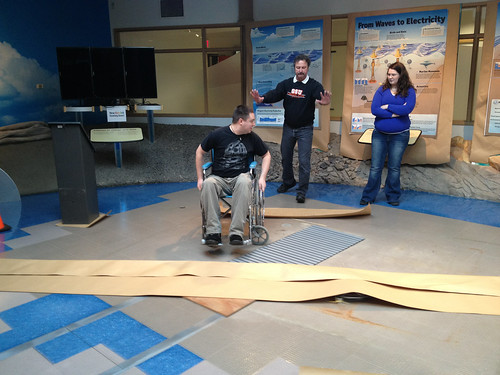Mark and I did some guerrilla filmmaking this morning. Despite some hiccups and an uncooperative Sun, we got some good footage. As I type this, Mark is preparing these and other videos for the Sea Grant all-hands meeting tomorrow and Friday.
Communicating what we do is a big part of what we do. This is ethically necessary for human-subjects research (see Katie’s post from Monday), and it’s also a great way to teach science as a process. It’s a somewhat recursive approach that can be, oddly enough, difficult to communicate. I like to think we do a decent job of it.
I think the key point, as always, is that we’re all in this together. Visitors, researchers, students and educators each have a role to play in this thing we call “Science.” Researchers can learn about natural phenomena from the observations of the general public, while the general public can learn about research and natural phenomena from our Visitor Center exhibits and outreach products. It’s a two-way street—nay, a busy four-way, multi-lane intersection—and our job is to facilitate the flow of information in any direction.
Much of what we do is familiar and time-tested—Bill, resplendent in his bloodstained white lab coat, holding aloft the entrails of a found shark before a crowd of excited children. Such childhood experiences with classic museum interpretation are what drew many of us into this field.
Hopefully, the new strategies and technologies we’re in the process of introducing will come to be equally accepted and enjoyed by visitors.


